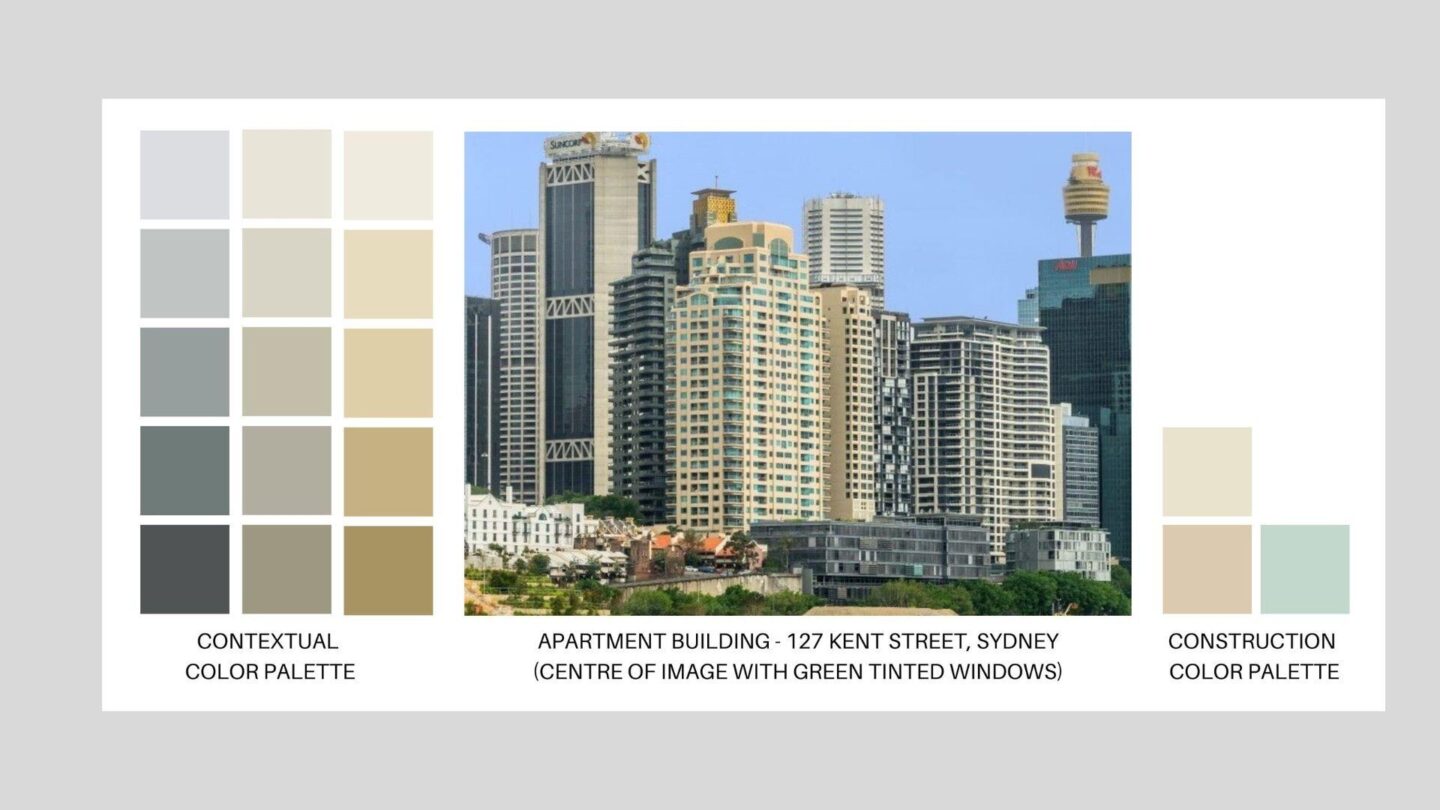
I was honored to be asked to particpate in the ‘Colorful Landscape/Vibrant City’ seminar presented to coincide with International Color Day by the Environmental Color Design Research Group of the International Color Association, March 13, 2024.
In my paper, ‘Linking Heritage and Contemporary: Managing Heritage Values with Contemporary Color Palettes‘, I discussed the issue of managing visual aesthetics across the built environment. In this context, color is just one design element that contributes to a mélange of different architectural styles. The abundance of these ever-evolving architectural styles and the many ways in which color is incorporated into the built environment have the capacity to contribute to visual ‘noise’. So, how can architects and designers use color in a meaningful way? And how can color be used to visually link heritage values and contemporary design, and perhaps contribute to visual cohesion rather than visual complexity?
The environmental color mapping process provides a starting point to identify both heritage-related colors and contemporary color palettes evident in an environment. Outcomes from these color mapping studies then provide a range of colors (specifically in terms of hue, plus tonal values and saturation levels) that can be blended to form facade color scheme options for practical application. This evidence-based approach leads to color being used in a more meaningful way and can help to contribute to visual cohesion rather than visual ‘noise’.